#sino-japanese war
Text

The Lunar New Year is usually the time for a week-long celebration in Chinatown, but in 1938 China was at war with Japan. On January 31st, residents of Chinatown observed the start of 4642 by praying in Joss houses (temples) rather than carousing in the streets. They were also working toward collecting $600,000, set as the year's war relief quota of the Chinese Consolidated Benevolent Association.
Photo: Associated Press
#vintage New York#1930s#Chinese New Year#Lunar New Year#Chinatown NY#NY Chinatown#Jan. 31#31 Jan.#Sino-Japanese War
97 notes
·
View notes
Text
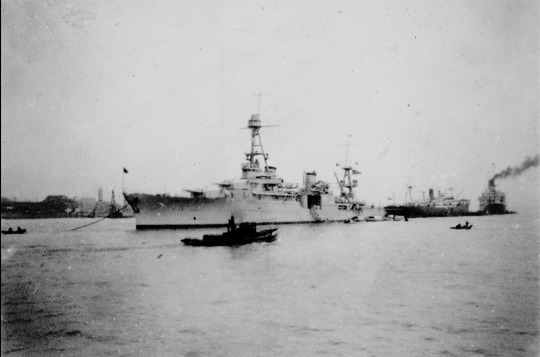



USS HOUSTON (CA-30) in Shanghai during the Sino-Japanese Hostilities.
Date:February 1932.
Historical Photos of China: ep01-365, ep01-373, Ep01-408, Ep01-369
#USS HOUSTON (CA-30)#USS HOUSTON#Northampton Class#Cruiser#Warship#Ship#United States Navy#U.S. Navy#US Navy#USN#Navy#Shanghai#China#Sino-Japanese War#February#1932#interwar period#my post
24 notes
·
View notes
Text
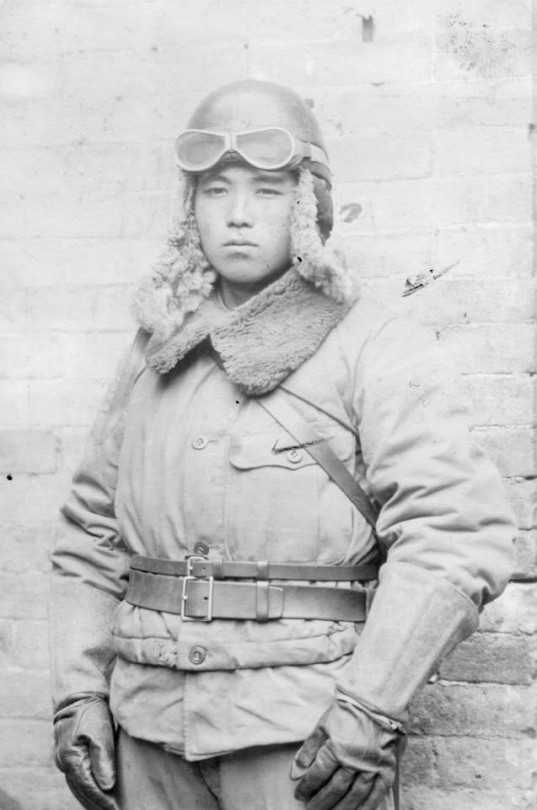
Tankiste japonais - 1930's-1940's
#WWII#guerre sino-japonaise#sino-japanese war#seconde guerre sino-japonaise#second sino-japanese war#armée impériale japonaise#imperial japanese army#tankiste#tanker#1930's#1940's
48 notes
·
View notes
Photo
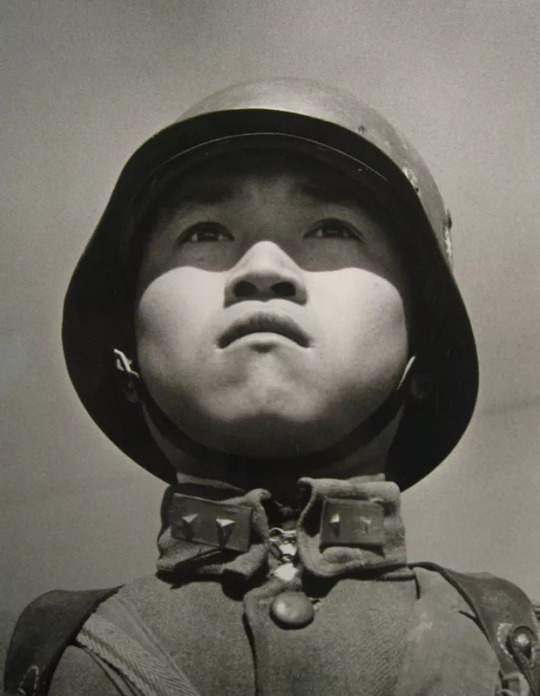
15 year old Chinese Soldier Prior to Departing for the Sino-Japanese Battle Front, 1938
Robert Capa
42 notes
·
View notes
Note
During WWII did the Japanese Empire have any interest in taking possession of Tibet or securing the then child Dali Lama?
Not that I'm aware of, but they needed a whole lot of China to get through before even worrying about trying to take Tibet. I doubt they were planning that far ahead.
Thanks for the question, Anon.
SomethingLikeALawyer, Hand of the King
9 notes
·
View notes
Photo
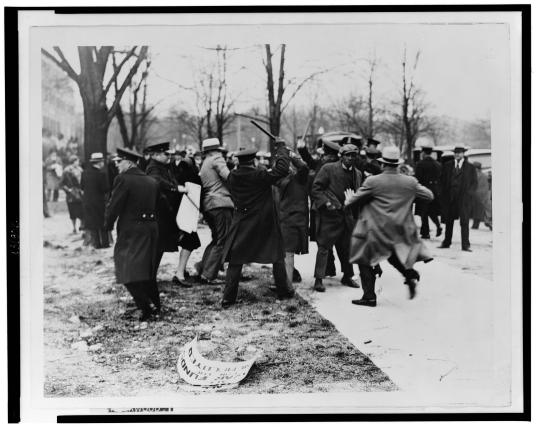
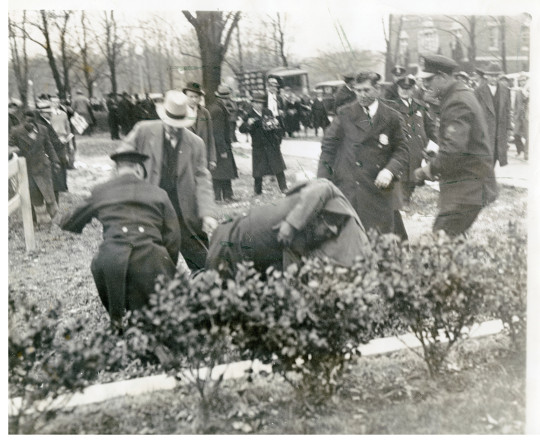
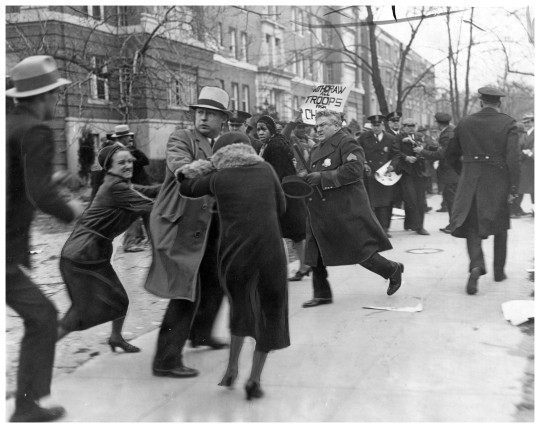

Police break up anti-imperialist protest, Washington DC: 1932
A protest took place near the Japanese Embassy at 2514 Massachusetts Ave. NW in Washington, D.C..
Police attacked the 30 demonstrators with clubs, fists and blackjacks while staff at the Japanese chancery watched from the roof and windows.
The protestors resisted and knocked down several of the police, including one who was hospitalized as a result of the confrontation. One of the demonstrators, Joan Hardy, was knocked unconscious during the fight.
When International Labor Defense attorney Bernard Ades went to seek their release at the Third Precinct station, Superintendent of the Police Pelham Glassford expelled him from the station.
Glassford had ordered the arrest of the demonstrators for parading without a permit, even though they were on the sidewalk and not blocking traffic. Some of the demonstrators were also charged with assault.
The Japanese army invaded Manchuria on the mainland in November 1931. Chinese forces resisted until February of 1932 when they were defeated. Guerilla warfare continued until the end of World War II in 1945. Reports and photos of Japanese bombing of civilians and shooting of unarmed survivors caused revulsion around the world at the expansion of the Japanese empire.
The Japanese invasion of Manchuria is regarded as the opening salvo in what became World War II.
1) Police break up a peaceful demonstration protesting Japanese army atrocities in Manchuria near the Japanese Embassy at 2514 Massachusetts Ave. NW in Washington, D.C. on March 26, 1932.
2) A police officer wrestles a demonstrator to the ground March 26, 1932 while breaking up a peaceful demonstration protesting Japanese army atrocities in Manchuria.
3) Two women fight back as police break up a peaceful demonstration protesting Japanese army atrocities in Manchuria near the Japanese Embassy at 2514 Massachusetts Ave. NW in Washington, D.C. on March 26, 1932.A sign can be seen reading “Withdraw All Troops from China.”
4) Two of twenty demonstrators arrested by police are awaiting “black marias” (paddy wagons) after a fight with police who broke up a peaceful demonstration protesting Japanese army atrocities in Manchuria near the Japanese Embassy at 2514 Massachusetts Ave. NW in Washington, D.C. on March 26, 1932.
Source.
#washington dc#anti-militarism#anti-imperialism#protest march#political protest#sino-japanese war#january 28 incident#invasion of manchuria#manchurian incident#communist party of the united states#police brutality#police violence#the great depression#history of crime and punishment
11 notes
·
View notes
Text
日本の歴史366 Day 91
4月1日 Summary:
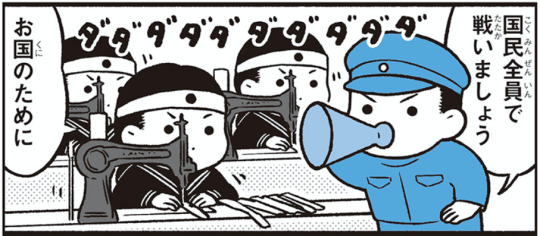
The National Mobilization Law was created with the intentions of giving the Japanese government complete and total control over public/civilian organizations (factories, labor unions) in order to fund the Sino-Japanese War. It gave the military unlimited funds and control over rationing. The law had 50 clauses. This was abolished during the 1945 American occupation.
Vocab beneath the break:
国家総動員法 こっかそうどういんほう National Mobilization Law (1938) [x] [x]
国家 こっか state; country; nation
発表 はっぴょう announcement; publication; presenting; statement; communique; making known; breaking (news story); expressing (one's opinion); releasing; unveiling
国民 こくみん people (of a country); nation; citizen; national
全て すべて everything; all; the whole
取り上げる とりあげる to deprive (someone) of; to take away;
戦争 せんそう war
全力 ぜんりょく all power; all strength; all one's power (strength, energy, efforts); one's utmost
戦う たたかう to fight; to make war (on); to wage war (against); to go to war (with); to fight (with); to do battle (against)
資源 しげん resources
法律 ほうりつ law
全員 ぜんいん all members; all hands; everyone; everybody; whole crew
国内 こくない internal; domestic
一色 いっしょく one color; one article; monochrome; everyone being caught up in the same thing
染める そめる to dye; to color
起きるおきる to occur usu. of unfavorable incidents; esp. something unpleasant); to take place; to happen
あらゆる all; every
政府 せいふ government; ministry; administration
自由じゆう freedom; liberty
対象 たいしょう target; subject (of taxation, etc.)
労働 ろうどう manual labor; labor; toil; work
物価 ぶっか prices of commodities; prices (in general); cost-of-living
運輸 うんゆ transportation
貿易 ぼうえき international trade; (foreign) trade; (international) commerce; importing and exporting
文化 ぶんか culture
言論 げんろん (one's) speech; expression of views; discussion
国民生活 こくみんせいかつ life of the people; people's lives; citizens' livelihoods
隅々すみずみ every corner; every nook and cranny; all the ins and outs
及ぶ およぶ to reach; to amount to; to befall; to happen to; to extend; to go on (for, until)
天皇 てんのう Emperor of Japan
命令 めいれい order; command; decree; directive
くり返しくりかえし repeatedly; cycle; repetition; cycle
塗り替える ぬりかえる to repaint; to paint again (a different color); to change completely; to break (a record); to redraw (e.g. the map); to remake
#shay's taking notes#japanese history 366#japanese history#japanese culture#japanese figures#vocab#japanese#learn japanese#study japanese#langblr#studyblr#japanese langblr#japanese studyblr#look toki#jpnstudynet#reading comprehension#learning through reading#language immersion#history#sino-japanese war#ww2#world war
3 notes
·
View notes
Video
youtube
Tradition Repurposed: New Year’s Pictures, Cartoons and Posters around the Second Sino-Japanese War
The Hoover Institution Library & Archives presents the Fanning the Flames Speaker Series. This eleventh session is moderated by Alice Tseng, professor of Japanese Art and Architecture at Boston University and presented by Shaoqian Zhang, associate professor, East Asian Art History at Oklahoma State University. The “Tradition Repurposed: New Year’s Pictures, Cartoons and Political Posters around the Second Sino-Japanese War” virtual event is on Thursday, May 19, 2022 at 12:00 pm PDT | 3:00 pm EDT (60 minutes).
Historically, Sino-Japanese cultural exchanges were dominated by a China-oriented mentality. This relationship shifted abruptly in the late nineteenth century with Japan’s rapid westernization and industrialization, which coincided with the cultural and political implosion of the Qing Dynasty, and was further inverted as Japan became a world power and China struggled to reassemble itself. It was thus with a sense of justification that the Japanese advertised themselves as the legitimate protector of East Asian culture, and key Chinese cities under their occupation became a battleground for what Japan called the New Order in East Asia.
The influence of Japanese aesthetics on Chinese art had also become increasingly noticeable by the end of the Nineteenth century. However, not until around the Second Sino-Japanese War did the Chinese political and military agencies start paying attention to the effectiveness of Japanese visual propaganda strategies in China, especially to the exceptional Japanese skill at adopting traditional Chinese folk motifs. This lecture examines the subsequent war of propaganda prints between the Guomindang and the Japanese militarists during the 1930s and 1940s.
To learn more about the accompanying book (edited by Kay Ueda, curator of the Japanese Diaspora Collection at Hoover) and to see past events, videos, and highlights, please visit our interactive online exhibition website, Fanning the Flames: Propaganda in Modern Japan. Please also visit our exhibition, now open in Hoover Tower at Stanford University. For complete details please visit our exhibition web page.
#hoover institution#art#art history#japan#nianhua#posters#china#folk tales#deities#political figures#politics#culture#ccp#chinese communist part#mao zedong#propaganda#sino-japanese war#history#woodblock prints#printmaking
2 notes
·
View notes
Text
During the Nanking Massacre in the Sino-Japanese War, the U.S. Gunboat Panay Was Attacked and Destroyed by Japanese Warplanes in Chinese Waters. December 12, 1937.
Image: The U.S. Navy river gunboat USS Panay (PR-5) sinking after Japanese air attack on Nanking, China, on 12 December 1937, in what became known as the Panay incident. (Public Domain)
On this day in history, December 12, 1937, during the Nanking Massacre in the Sino-Japanese War, the U.S. gunboat Panay was attacked and destroyed by Japanese warplanes in Chinese waters. The American vessel,…
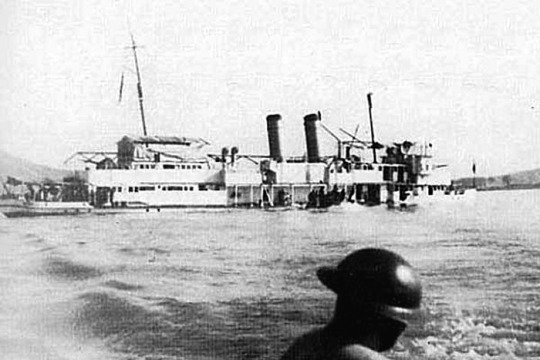
View On WordPress
0 notes
Text

Chinese soldiers moving via The Great Wall of China, northwest of Japanese-occupied Beijing, 1937
61 notes
·
View notes
Text

Japanese troops enter the City of Shanghai - 1937
#world war two#1940s#worldwar2photos#history#ww2#wwii#ww2 history#wwii era#world war 2#ww2history#shanghai#China#1937#sino japanese war#japanese army
61 notes
·
View notes
Photo

May 9, 1938, Chinatown: Sixty Chinese veterans of the the Second Sino-Japanese War parading for relief for civilian victims of the war.
Photo: Bettmann Archive/Getty Images
#New York#NYC#vintage New York#1930s#May 9#Sino-Japanese War#civilian victims#Chinatown#parade#veterans#Asian-Americans
87 notes
·
View notes
Note
Do you think the sutton Sunk would have made an impact in the second sino-japanese war if china actually got its hands on it?
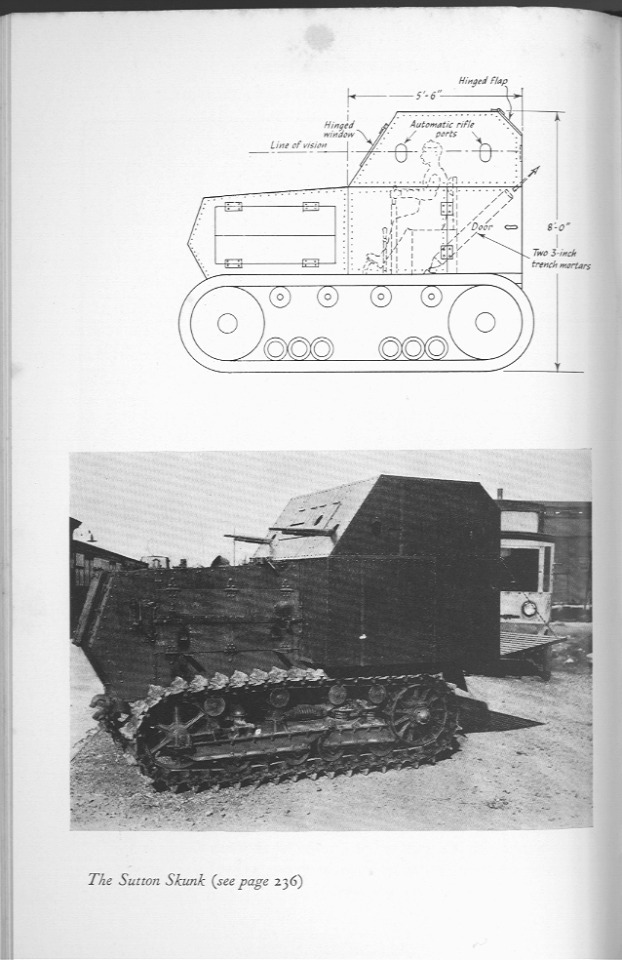
In my opinion, not really, and it has very little to do with the tankette itself. By 1937, China was so woefully behind the rest of the world in technology, industrialization, and development, that there was no real chance of a Chinese victory, especially against Japan, a nation that had seized onto the western tenets and methods of militarism, industrialism, and imperialism like second nature.
I'm sure that, in isolated engagements, the Skunk could have made a difference, but even in the very best scenario, it would be a case of "won the battle, but lost the war"
9 notes
·
View notes
Text
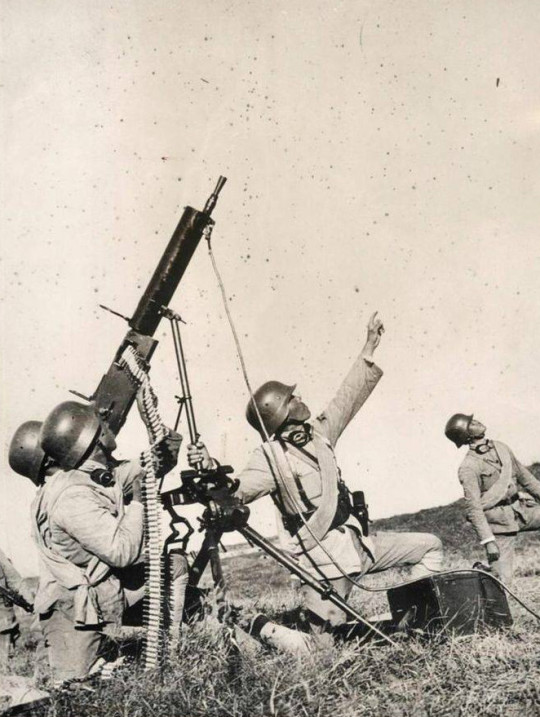
Soldats chinois nationalistes avec une mitrailleuse lourde MG 08 Maxim Type 24 - Guerre sino-japonaise
#WWII#guerre sino-japonaise#sino-japanese war#seconde guerre sino-japonaise#second sino-japanese war#armée chinoise#chinese army#armée nationale révolutionnaire#national revolutionary army#mitrailleuse#machine gun#mitrailleuse lourde#heavy machine gun#maschinengewehr 08#mg 08#maxim
24 notes
·
View notes
Text
How Eileen Chang Revived My Fascination With the 'Femme Fatale'
Content Warning: Lust, Caution contains scenes of graphic violence, nudity, and discussions of murder (the book only hints at these things). The movie also depicts sexual assault. Viewer discretion is advised.
Spoilers for Lust, Caution (book and film) ahead!
femme fa·tale (noun)
1 : a seductive woman who lures men into dangerous or compromising situations
2 : a woman who attracts men by an…

View On WordPress
#ang lee#assassination plot#chinese history#eileen chang#espionage thriller#femme fatale#historical fiction#leehom wang#lust caution#second sino-japanese war#spy movie#spy thriller#tang wei#Tony Leung Chiu-wai#world war ii
24 notes
·
View notes
Photo

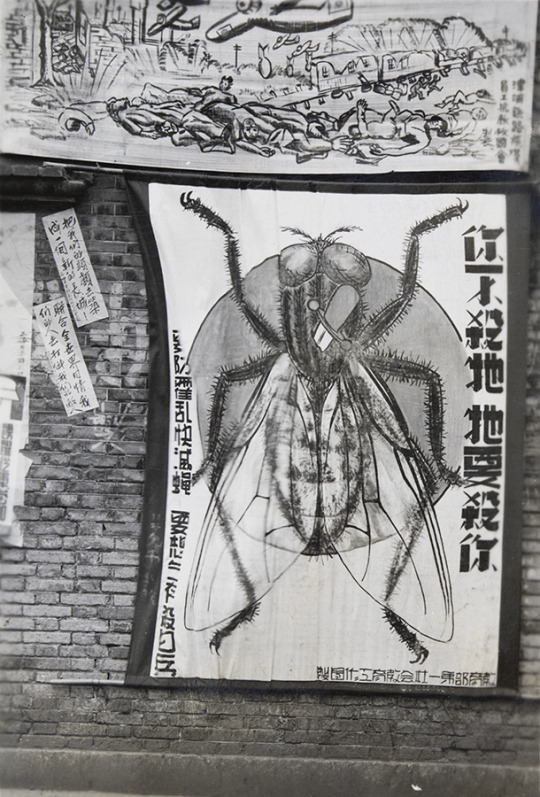


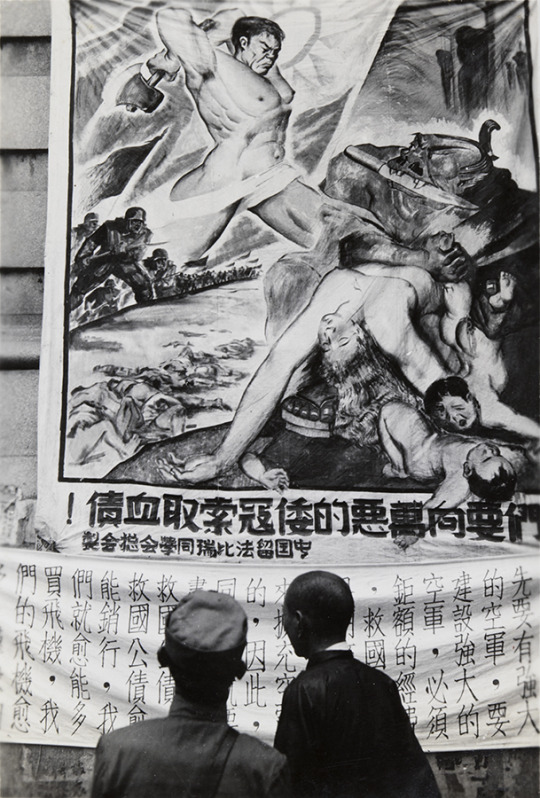



Propaganda posters in Wuhan, mid-1938. Found in an album that had belonged to Leslie Reginald Frederick Shrimpton RN (1910-1964), who served on the gunboat HMS Falcon in China waters from 1937 to 1939. All photographs and descriptions with translations from University of Bristol - Historical Photographs of China.
1) The banner depicts Nationalist forces attacking the Japanese. The Chinese text on the banner urges viewers to join the military, fight the Japanese, and thereby defend China. Bi-s168
2) Anti-Japanese public hygiene banner. The slogans on the lower banner (depicting a fly with a Japanese Rising Sun Nisshōki emblem) read: 'We need to knock down our enemies with the world's sympathy on us'. 'We need to prevent cholera and kill flies; and if you want to survive, kill the Japanese soldiers'. 'If you don't kill it, it's going to kill you'. The higher banner depicts Japanese bombers attacking a train. A wall poster on the left reads: 'Build a new Great Wall with our heads'.
3) Banner by L'Association des Etudiants Chinois de Retour de FBS (France, Belgium and Switzerland Returned Students Association), Hankow (Hankou). The banner text provides explicit details that accompany the image of 'cruel massacre and rape never before heard of'. Bi-s163.
4) Propaganda banner featuring Chiang Kai-shek. The slogans on the banner read: 'War of Resistance to the end!' and 'Support the leader'. Chiang Kai-shek is depicted beside Hankou (Wuhan) on the map of war-torn China. This photograph was taken in Wuhan.
5) The banner slogan reads: 'We demand that the Japanese repay their blood debt!' Photograph taken in Wuhan. Bi-s164. Photograph 3 shows the same building in a different location.. The actual term used here for 'Japanese' is 倭寇 'Dwarf pirates'. Bi-s167.
6) The main banner, showing charging soldiers and workers, bears the slogan: 'Defend Wuhan!' The Hankou (Hankow) bund is depicted in the banner - the clock tower is part of the Custom House. The banner was made by the 'Korean Youth Wartime Service Corps' (朝鲜青年战时服务团), founded in Wuhan in December 1937 by leftist Korean nationalists. Bi-s166.
7) Banner outside the headquarters of "L’Association des Etudiants Chinois de Retour de FBS", Wuhan. The banner was made by L'Association des Etudiants Chinois de Retour de FBS (France, Belgium and Switzerland Returned Students Association). The banner slogan reads 'Mobilize the power of the masses to defend Wuhan'. Sign on the window of the L'Association des Etudiants Chinois de Retour de FBS headquarters building at 69 Jianghan Road (江漢路六十九號) in Hankow (Hankou), in French: BUFFET & BILLIARD. Sign on the window in Chinese: Cold drinks / Coffee. Bi-s162
8) Remarkably, famed war photographer Robert Capa took this photograph of the street from inside of 69 Jianghan Road. This was identified by the excellent Visualizing China blog, and the image is marked from the International Center of Photography/Magnum Photos, who published it with other photos in 2018.
#wuhan#武汉市#hankou#war propaganda#propaganda#propaganda posters#black and white photography#sino-japanese war#sino japanese war#kuomintang#L'Association des Etudiants Chinois de Retour de FBS#朝鲜青年战时服务团#royal navy#republic of china#patriotic resistance#resistance to japan#japanese aggression in china#robert capa
33 notes
·
View notes